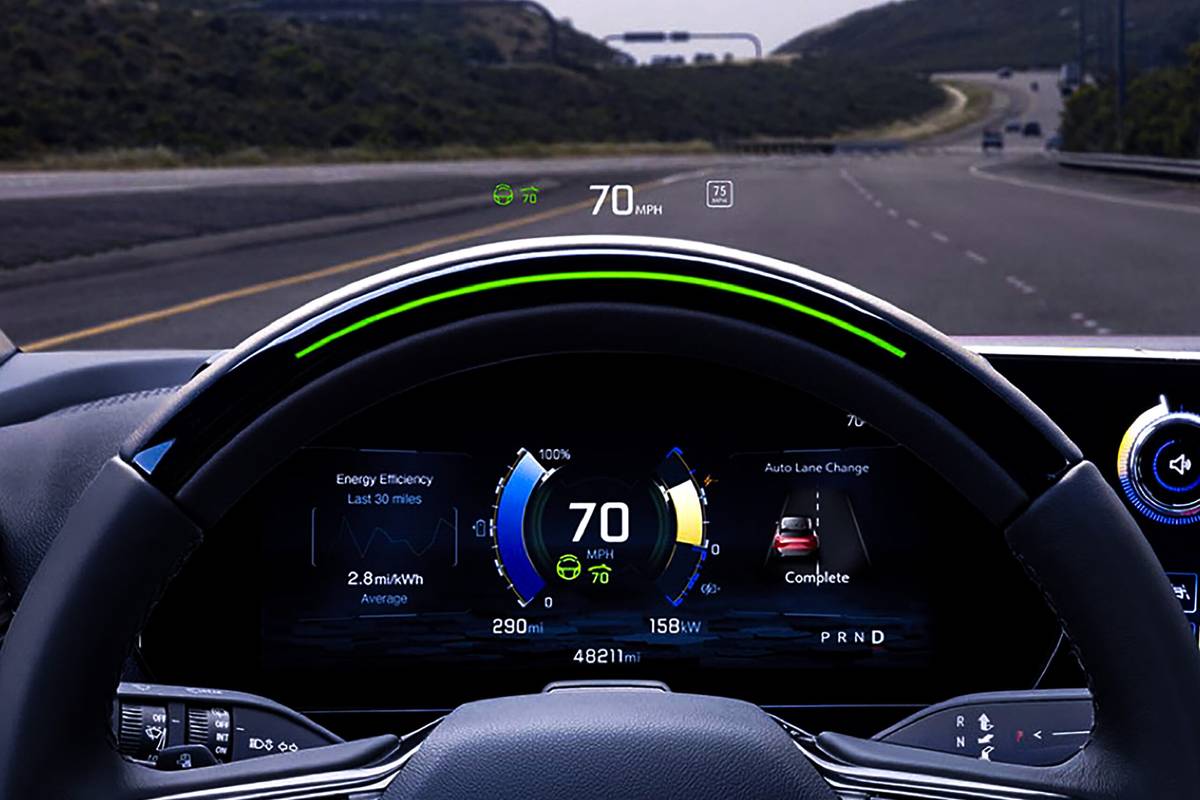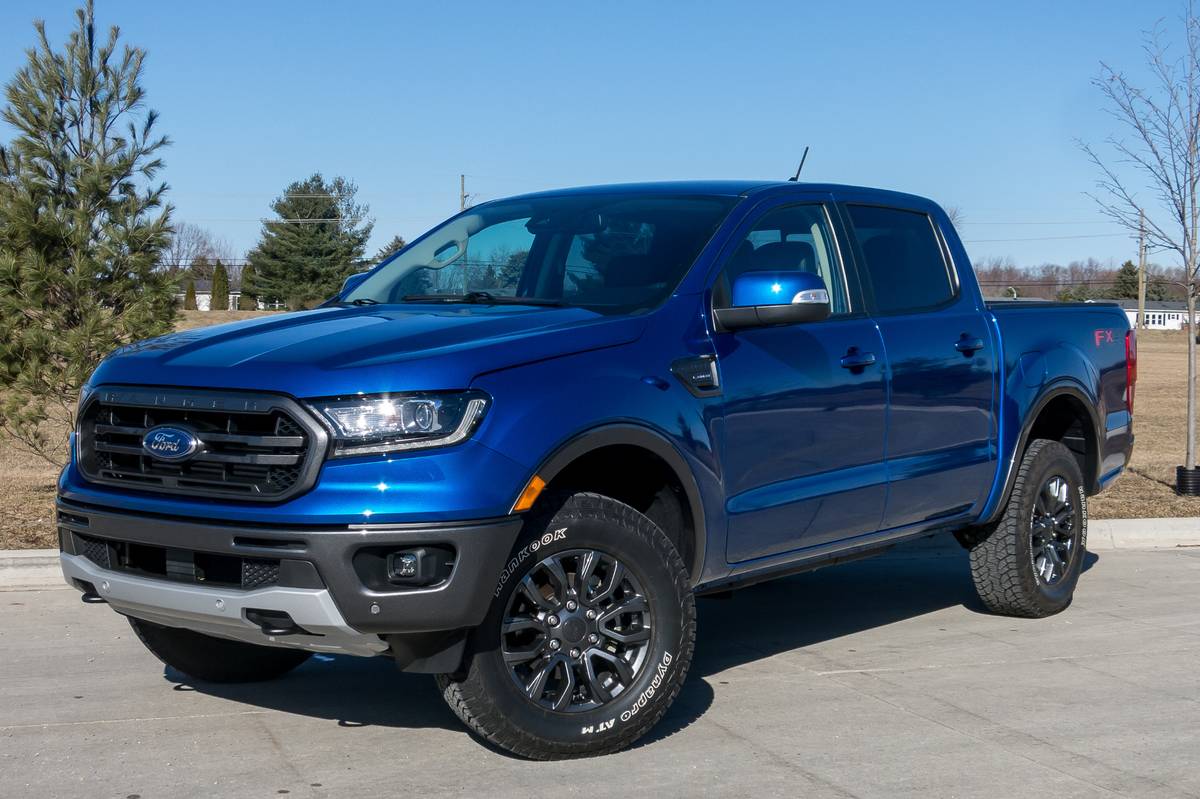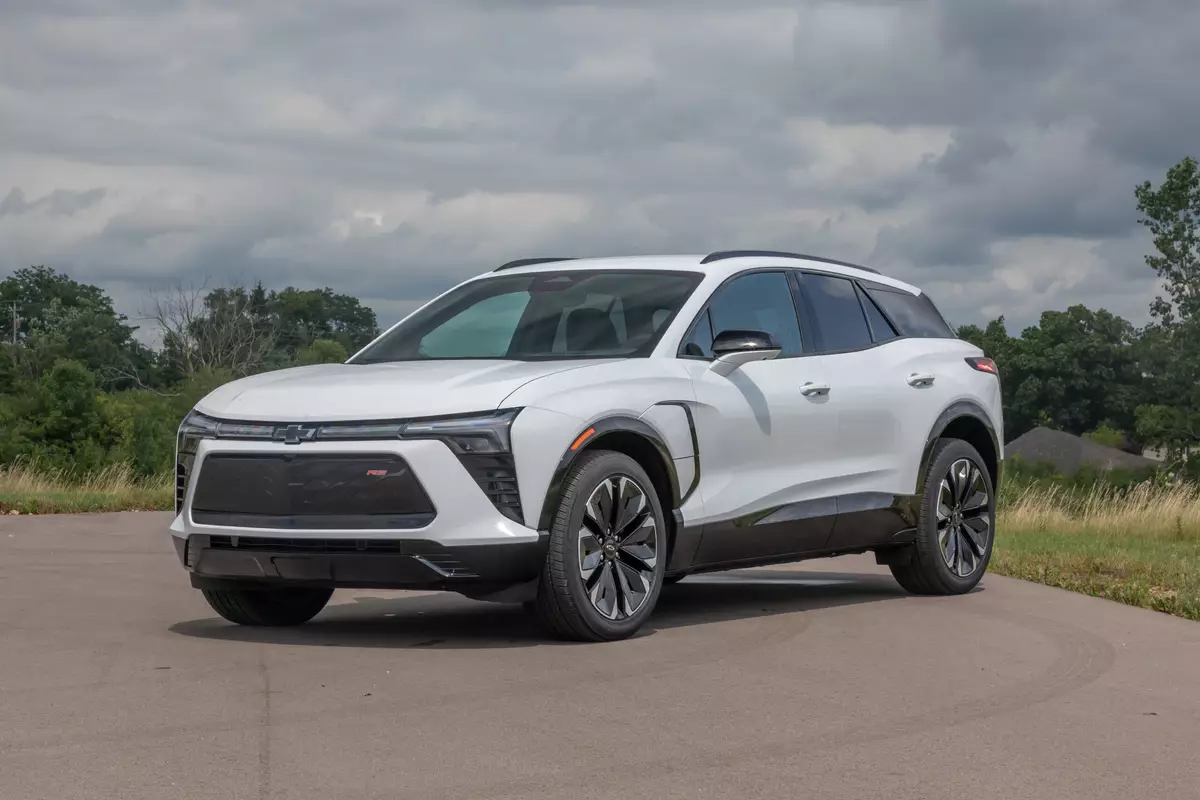Video: We Charged a Mach-E With a Ford F-150
By Cars.com Editors
January 10, 2022
Share
About the video
How Well Does Ford’s Pro Power Onboard Charge an EV?
Transcript
One of the reasons we chose the 2021 Ford F-150 as our Best of 2021 and our Best Pickup of 2021 is that it comes in a hybrid version.
And one of the sweeteners to the hybrid version is the Pro Power Onboard generator system that uses the hybrid powertrain to give you, essentially, a generator without taking up the space and having to carry separate gas cans and all that stuff. It's just right here in the side of the bed. Now, standard is 2.4 kilowatts of output. We went for the optional 7.2 kilowatts, which is a lot of power. We've been finding everything we can to plug into this thing. It might be our favorite feature. Aaron Bragman towed a camper and used this system to power the air conditioning in the camper. Pretty good use for it. I actually was one of the editors that used the truck as a backup while getting a electric vehicle charging system installed in my house. So during the time that the power was cut, the truck served as backup to keep things moving, keep work happening, keep a little air conditioner running, all really useful. So it was only a matter of time before we said, "Hey, why don't we try charging an electric car with our electric-ish truck?" Lo and behold, here's a Ford Mustang Mach-E. We're gonna use our Ford to charge the Ford. Now, there are ways to do this and there are ways not to do this. We're gonna try and do it the right way. The 240-volt outlet in this system is limited to 30 amps, so we are going to try and stay within that limit. Now, you can get converters that go directly from this type of outlet. This is a twist-lock NEMA L14-30 plug directly to the NEMA 14-50 outlet, like so. But we, because we believe in overkill and safety, and because the internet is a horrible, mean place and we're under great scrutiny, we decided we'd throw in a 30-amp breaker of our own in the middle just to be extra careful. So that's how we decided to do it. We're gonna give it a try. (laid-back music) All right, now that I'm all plugged in, I see from the blinking light on our Electrify America Electrify Home Level 2 charger that it's booting up. I'll let it go. We're using this unit because it can be throttled down to a safe level. Now, I mentioned 30 amps here. This can be throttled down from 40 to 32 to 16. So, 32 is a little high even though, technically, this Mach-E can take up to 10.5 kilowatts, we gotta keep it lower, so we're throttled down to 16 amps using this unit. So, it looks like it has booted up and it's ready to go, so we're gonna plug it in. According to the readout in the truck, the watts are climbing, showing that it is working, drawing 1,800 watts. Now, just as another way of measuring it, we've got a little inductive ammeter here. Just heard the engine turn on, as you would expect when you're drawing more current. It can't all come from the battery even though it's an inverter-generator system. So we're gonna clamp on here. Sure enough, it says it is drawing about 15.8 amps. So, pretty much what we've set the charging system to draw. So I'm gonna see how long the Mach-E says it's gonna take to charge at this level. Well, this is a little disappointing. Currently, the state of charge of the battery is 55% and roughly 131 miles of range. The Mach-E says, charging at this rate, it'll reach 100% at 3:54 a.m. tomorrow. That's roughly 14 hours from now. So I guess that's what happens when you charge at 16 amps a vehicle that's capable of accepting 48 amps. So, I guess we'll see how much of this we can stand. All right, I said I'd see how long we could stand it. That was about another 40 seconds. Just to be clear, I said it's capable of taking 48 amps. That's actually a little high. The limit on the Mach-E is 10.5 kilowatts for the Onboard charger. But what I've found when charging at the maximum is it actually draws almost 48 amps because the fans are blowing full speed, there are some losses, et cetera. We're gonna go for broke here. We are going to reset our system here to 32 amps and see if we can charge at that level. We use the app to do that. It raises the limits of the Electrify America system here, and we're just gonna give it a try. We've got a lot of safeguards in place. We got a breaker here. The truck has its own protections. Let's just give it a try and see what happens. I'm just gonna watch the ammeter here. It's already reading 1.6 amps, 3.0, 3.6. All right, it's going up. It's over 6. The engine hasn't turned on yet. Still climbing ... All right, it's already over 16 amps, so we know we're charging faster than before. 20, 22.8. The engine started. 26 amps, 27, 31.8 amps. Oh, it just went to zero. Well, I guess we got our answer. Seems like the truck decided that was too much current, predictably. Yes, I have a blinking light there. So, we can't charge faster than 16 amps with this unit, which is unfortunate. Now, we do have another Level 2 charger in our arsenal, one or two actually, that have an in-between setting that can charge at 20 amps instead of 16 or 32. But unfortunately, they're hardwired in place. They don't have the plug, so we couldn't just pull them off a wall and do this test. What we're gonna do is we're gonna set it back to 16 amps, 240 volts, and let it run awhile and at least see what we get with that. Well, it's been an hour of charging. So I'm just gonna stop this little experiment. According to the FordPass app, it has been, we have added 4% of battery charge and 10 miles of range charging at 16 amps. The engine just turned off for the first time in an hour. It's been running the whole time to keep the generator going. I also hear the cooling fans turning down. According to the truck, it was producing a consistent 1,800 watts per leg. It's marked A and B on the readout. You combine those. So that's 3,600 watts, a little journalist math for you. And we saw a consistent 15.8, 15.9 amps. So just confirming everything. An hour waiting gave us time to think about how this could have gone differently because that's not very fast charging, at least not as fast as it could have been. One way is if we had a charger, a Level 2 charger that could charge faster than 16 amps but a little slower than 32. We actually have one, the ChargePoint Home Flex, which can charge at 24 amps. That would have been a better choice, but it is hardwired to a wall and not easily removed, so we couldn't have plugged it in here. So that was one place we lost. Another is if the battery state of charge were higher on the Mustang, it would have accepted less power. That's the case for all electric cars. The more full the battery, the less juice they take. So if we started with the battery state of charge at 60-70%, it might've gotten in under that 30-amp level that the truck is able to give us and, ironically, would've charged faster by virtue of being more full to begin with. Then there's the fact that there are some electric cars that let you adjust the current demand in the car itself. And Tesla is probably the best at this 'cause it lets you choose the number of amps by amp. I mean, you could've chosen 30 amps or 29 amps or 27 amps on the touchscreen, and that would have meant we could use any kind of high-powered Level 2 charging system and just controlled it with the car. That is not a feature that all EVs provide, and the Mach-E doesn't either. Perhaps Ford would like to add that in the future. I think they probably should. So yes, this could have gone differently. It's a little bit disappointing. Is this something that you would do for any reason in the world? Well, the only one we can think of is an emergency. Let's say the car is stranded with no charge whatsoever. That would be a good time to do something like this, preferably with a little more juice than we were able to give it. In fact, we did something very much like this 10 years ago, with a DC fast charger mounted to a medium-duty truck with the help of a company called Real Power. But this is a lesser version of that. It really helps you avoid situations we've seen in the past. Like we've been at Supercharger stations with Teslas and seen flatbed pickup trucks show up and dump Teslas that just, you know, their owner screwed up and they ended up bricked on the side of the road, and they had to get towed to a Supercharger station. This way you could bring the charge to the car instead of the car to the charge. But make no mistake, using gas to generate electricity to charge a car is by no means efficient, environmentally friendly or cost-effective. Just to see how much gas we used for this little experiment, we intentionally filled the F-150 to the brim, essentially, at a nearby gas station. We did the charging, and now we're gonna take it back to the same pump, fill it to the same level, and see how much gas it used for one hour charging the Mach-E at 16 amps. The amount out of gas used only reinforced that charging an EV this way is only for emergencies. After idling constantly at 1,000 rpm over the course of an hour and five minutes, despite operating at half of its capacity, our F-150 hybrid topped off with 1.6 gallons at the same station only a couple of blocks away. The cost was $6. The charger's app said it provided 4 kilowatt-hours total, which seems a little generous, but even so, that works out to $1.50 per kilowatt-hour. The national average runs about 13 to 14 cents per kilowatt-hour for residences and even DC fast charging at Electrify America was only 43 cents per kilowatt-hour last time we checked. There were a lot of watts and amps in this video, so if you're unclear on anything, look for more detail in the write-up at Cars.com at the link provided.
Featured stories

By Cars.com Editors
September 15, 2025

By Corinne Vercoe
September 9, 2025

By Robert Duffer
September 9, 2025
